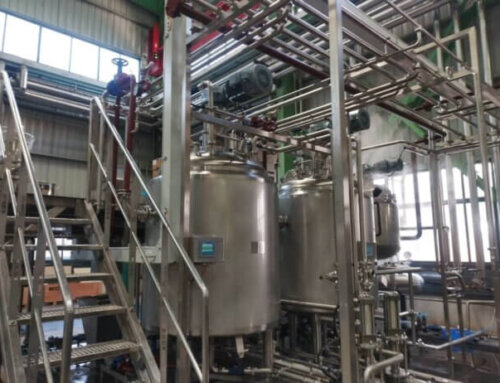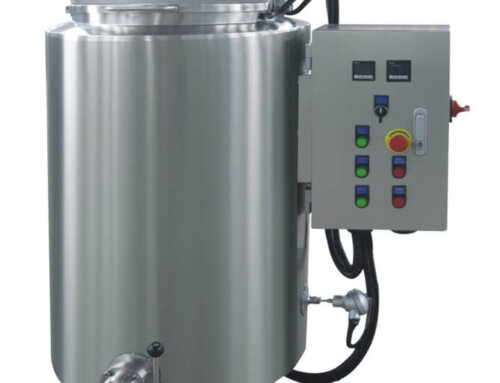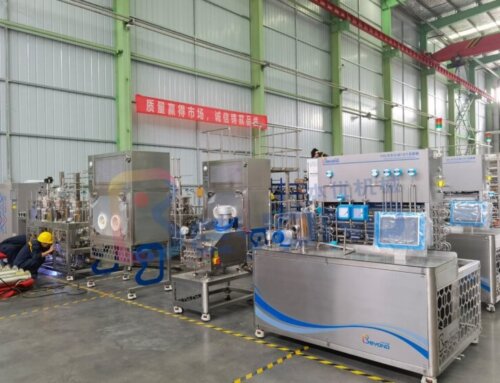Red Wine Production Process Description
About 80% of the grapes produced in the world are used to make wine. Wine is rich in nutrients and has the effects of lowering blood pressure, relaxing tendons and activating blood circulation. Therefore, with the development of the economy, people’s consumption of wine is increasing gradually, and the establishment of wine production bases according to local conditions and the development of wine production has very broad prospects.
Wine is made from fresh grapes or grape juice through full or partial fermentation. It contains fermented wine with a certain alcohol content. Winemaking is to use of yeast to convert the sugar in the grape juice(pulp) into alcohol through alcoholic fermentation, and then undergo aging, esterification, oxidation and precipitation in the clarification process to make it a fruit wine with clear solution, beautiful color, mellow and aromatic product.
The wine production process includes raw materials selection, grape crushing/destemming, clarification, standardization, fermentation, red wine filtration and pressing, wine aging, formulation and blending, bottling and sterilizing.
The production capacity for red wine is from 10 tons per day to 3000 tons per day, and the end products can be filled into glass bottles.
The red wine production equipment is made of SUS304 material and which can guarantee the hygiene requirements in the food industry.

Red Wine Production Process Introduction
1. Raw material selection
The raw materials for brewing red wine require grapes with high sugar, acid, and tannin content, purple-black, strong aroma, and small-grained varieties. Harvest during the best edible maturity period, and remove rotten and immature fruit.
2. Grape destemming and crushing and pressing
Remove the grape stems first, use a destemmer or manually remove the stems, and then use a crusher to crush the grapes. The part of the crushing equipment in contact with the fruit should be made of stainless steel. Be careful not to break the grapes or bring grapes stems in the crushing process to prevent the pulp from being contaminated and the tannins in the fruit stem to bring astringency to the wine during fermentation. It is then washed with drinking water, drained, and crushed to obtain pulp.
3. Grape pulp/juice clarify
The clarification treatment of grape juice before fermentation can remove suspended solids, phenolic substances and some oxidases in grapes, so as to prevent oxidation and improve wine quality. Add 0.02-0.05g/L pectinase to the grape juice and let it stand at room temperature for 24 hours.
4. Sulfurous acid treatment
Add sulfurous acid solution to the grape juice to prevent the multiplication of bacteria, ensure the normal reproduction and activity of yeast, prevent browning of the grape juice, and facilitate the settlement and clarification of suspended matter in the pulp. The amount of sulfurous acid added is calculated by volume, and the content of SO2 is 0.01%. Too much SO2 will affect the reproduction of wine yeast, and too little SO2 will easily infect miscellaneous bacteria.
5. Fermentation broth adjustment
Alcohol in wine is converted from the fermentation of sugar in the fruit. 1.7g of sugar can produce 1% alcohol. Generally, the sugar content of grapes is 14%-20%, which can produce about 8-11 alcohol. The alcohol content of general wine is 12-18 degrees, and the sugar content in the grape pulp is measured before fermentation to determine the amount of sugar added. The acid content of wine is required to be 0.5%-0.75%, and the acid content of grape pulp is between 0.6%-1%. If the acidity in the pulp is too low, it can be adjusted with citric acid and tartaric acid.
6. Main fermentation
Wine fermentation is an important part of the red wine production process. Generally, excellent wine yeasts are selected, and the strains are expanded and cultivated into wine mother liquor through three stages. The amount of wine mother liquor is 1%-10% of the fermentation broth. Start fermentation at 20°C-25°C, stir once a day in the morning and evening in the first few days of fermentation, press the skin dregs floating on the top into the fermentation tank, and the main fermentation can be completed in 5-10 days.
During the main fermentation process, the temperature and soluble matter content of the fermentation broth are constantly changing. The temperature rises to the highest during the vigorous fermentation period, and then gradually decreases. When the temperature is close to room temperature and the soluble matter is about 1%, the fermentation will finish.
The cooling during the fermentation process is mainly through the cooling coil jacket of the fermenter to transport cold water or ice water to cool down.
The fermented liquid should not be filled up, so as not to overflow the fermented liquid during fermentation, and a space of 1/5 of the total volume should be reserved. The vessels used for brewing red wine are mostly open vessels during the main fermentation.
7. Red wine filtration
When the main fermentation is completed, the skins should be separated in time. The separation method is to first filter out the clear wine in the container, and the remaining wine containing skins and sediments should be squeezed out with a coarse filter and a screw press, and then fill the fermentation liquid into a fermentation container, the filling capacity is 95% of the capacity, and the post-fermentation container needs to be strictly sealed.
8. Red wine post-fermentation
The post-fermentation temperature is generally controlled at 15-18°C, and the post-fermentation is carried out slowly for about 30 days, so that the remaining sugar can be further fermented into alcohol. When the post-fermentation ends, the sugar content drops to 0.1%.
9. Red wine aging
The fermented wine is new wine, and it is turbid and has a spicy taste. It is not suitable for drinking. It must be stored and aged. The post-fermented wine is sucked into the aging tank by the siphon method. The filling capacity is 100%. During the storage and aging, the barrels need to be changed many times to remove the sediment in the wine, and barrels need to be added to keep the barrels full of wine. Do not move or vibrate the wine before changing barrels. Use the siphon method to keep the wine out of air as much as possible to avoid oxidation. The aging time is 1-2 years, the longer the time, the better the quality of the wine.
10. Preparation of finished wine
The aged wine is sucked out with a siphon, and the composition of the wine liquid is tested, and it is properly adjusted according to the requirements of the finished wine. The content of modulation is mainly the alcohol degree, acidity, sugar content, color and aroma of the wine. The prepared wine also needs to be stored for a proper period of time to make it taste more harmonious.
11. Fine filtration, bottling, sterilization and cooling of red wine
Before bottling, the wine is finely filtered to ensure that the wine is clear and not turbid, bottled, sealed, heated to 70°C, pasteurized for 10-15 minutes, and then cooled to room temperature for packaging.




